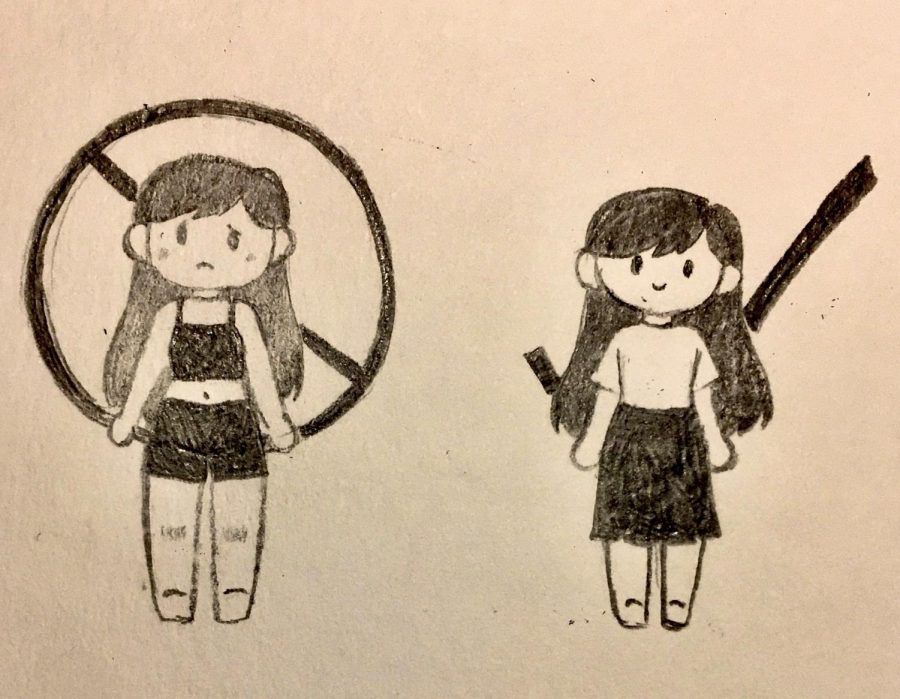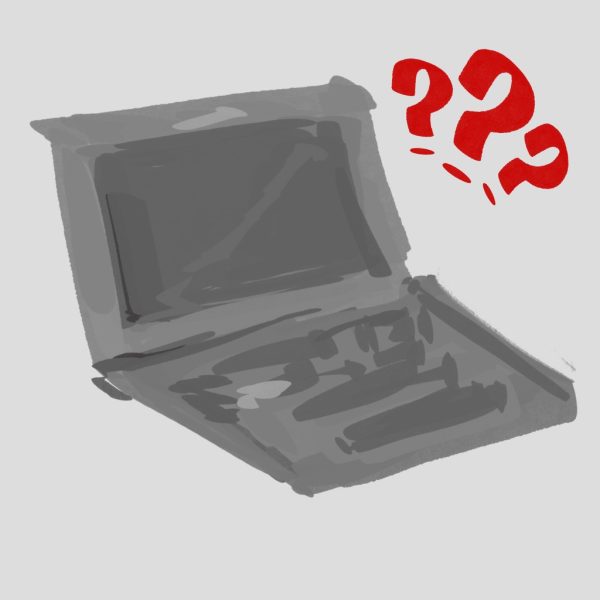School Dress Code: Necessary & Beneficial
Some students feel that dress codes infringe on their personal rights to dress how they would like. Some feel it is oppressive, and others feel it is sexist. However, the dress code is implemented to uphold a sense of order amongst the student body, who can easily get lost. It serves as an unchanging set of rules that helps students stick to a routine, which ultimately leads to a more orderly environment.
Most workforces have regulations and rules on how employees dress and present themselves. The dress code is not meant to infringe on the personal rights of students, but to prepare them for an environment that is not as forgiving as high school.
English teacher Mary Kirby also believes students need to be acclimated into a professional environment before entering the workforce. “I have always been drawn to the expression ‘Dress for the position you want to have in your future,’” Kirby said.
The main priority of schools across America is to ensure that students are learning in an environment free of distractions and hazards. When a dress code says that students are not permitted to wear open-toed shoes, it is not to take away a student’s individual identity, but to make sure that students are as safe as possible. Open-toed shoes can become a hazard, which is not something schools need during a fire drill or another emergency.
Another item scrutinized in the dress code is hats. Many feel they should be able to sport their favorite team or brand atop their heads while in class. However, while the hat seems like an innocent accessory, it could ultimately breach the security of a school, as it could hide one’s identity.
Some restrictions may seem directed towards a certain gender, and some may need to be revised for a more modern social setting. However, when one is hired for a job in any professional field, he/she will be subjected to numerous rules and regulations on presenting oneself properly. The saying “Dress to impress!” correlates with the professional environment seen in schools and colleges. It may seem unfair to some, but the professional world is unforgiving, and most will likely have to comply with professional standards in order to uphold a preferred job.
In a normal office setting, clothing that promotes illegal activities and inappropriate subjects will not be tolerated, which is why schools have regulations on clothing pertaining to criminal activity and violence. One anonymous Lynbrook student shared, “One’s shoulders are not a distraction, but backpacks and t-shirts with paraphernalia and alcohol certainly are.”
As stated before, the purpose of a dress code is not to undermine one’s personal style or identity, but to keep all students as safe as possible, while learning to the fullest extent. Though there have been certain circumstances in which students have been unfairly punished for their clothing, dress codes are generally a necessary rule.
Junior Abbey McManus shared, “While I do not agree with every aspect of the dress code, I do believe that it is important to prepare students for the expectations of their future careers. Certain clothing is not acceptable in many environments that students will encounter as adults.”
Dress codes certainly have their flaws, but they are critical to maintaining some sense of order amongst hundreds of students and for preparing students to enter the “real world” after graduation.


















